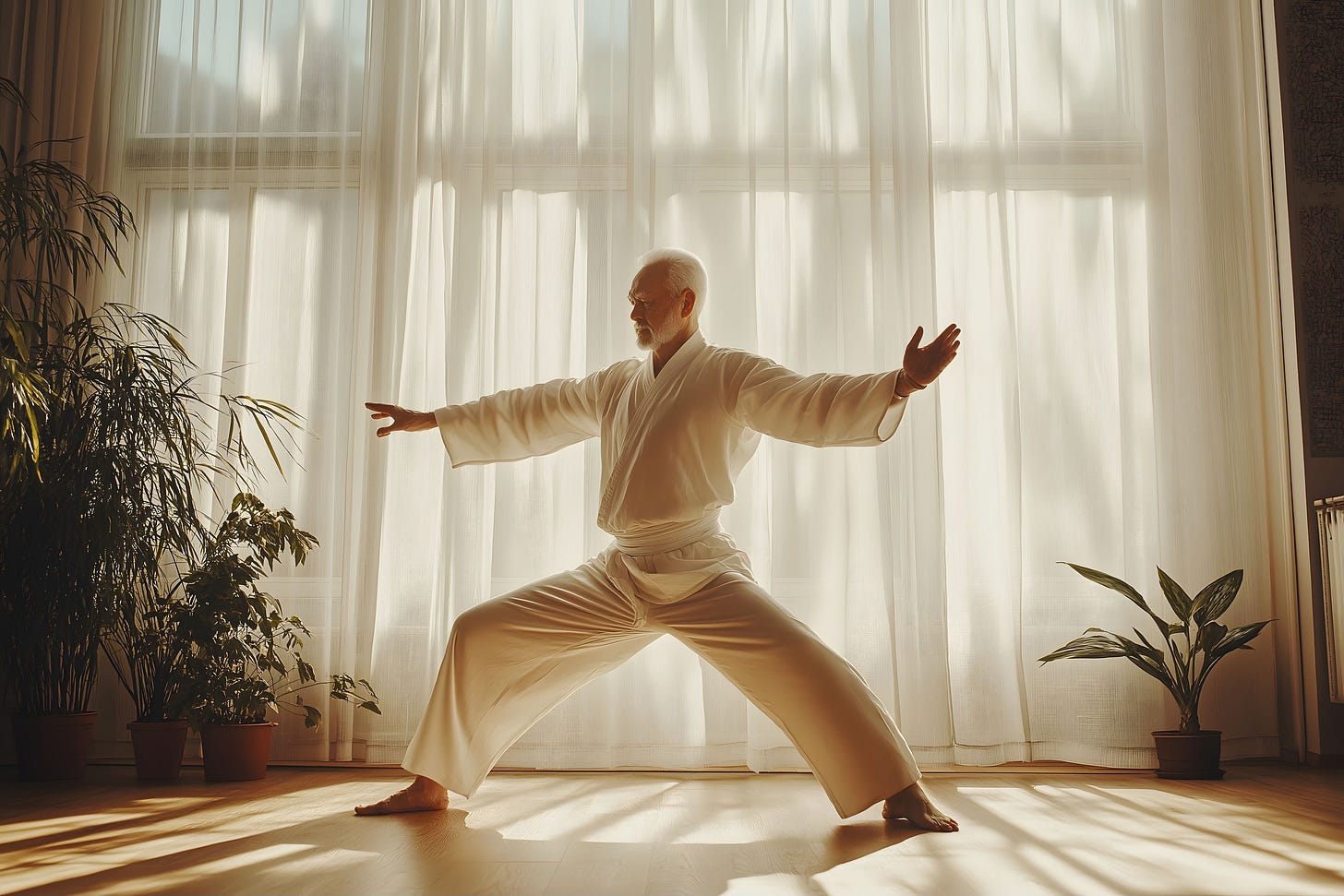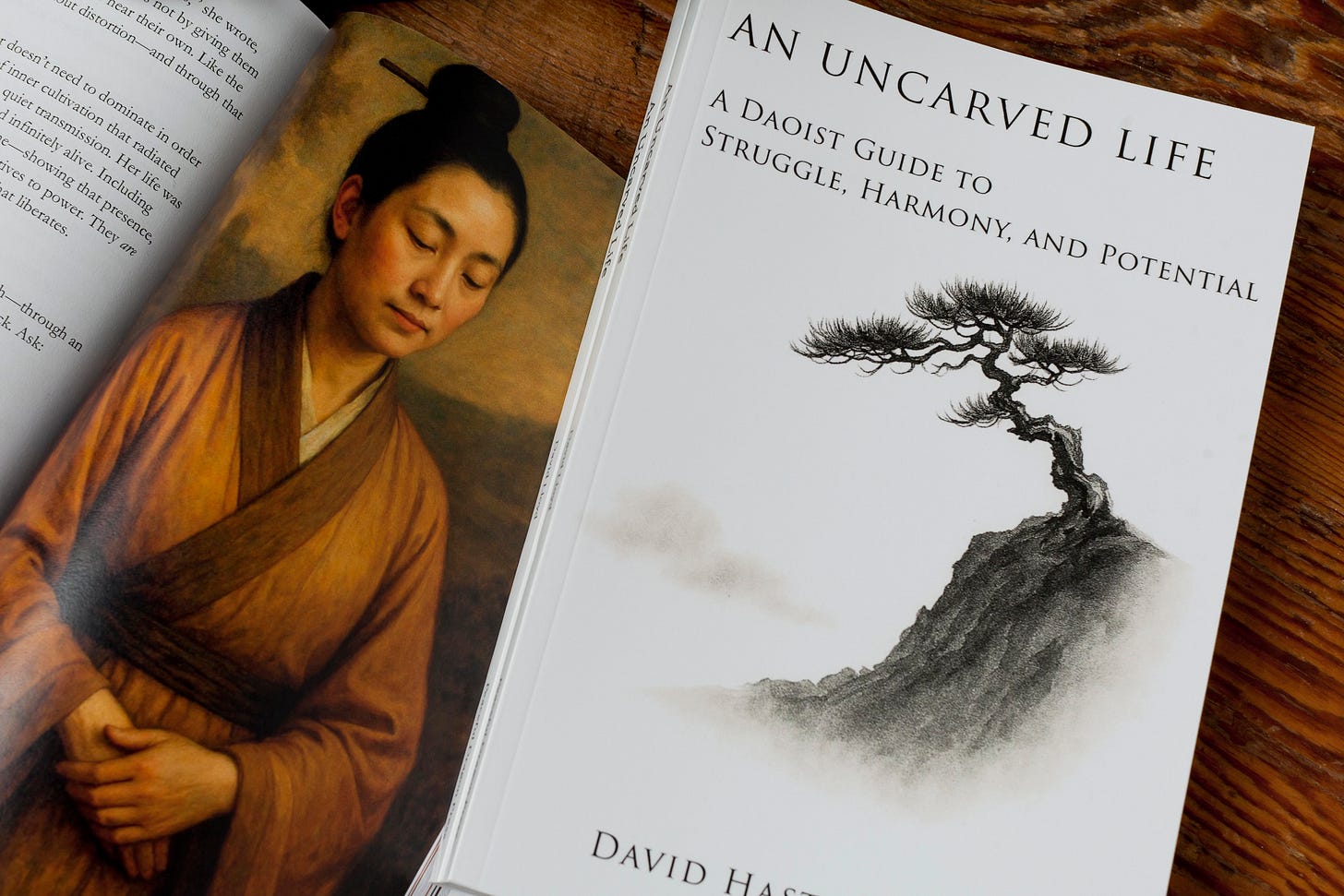Peer-Reviewed Research: How Tai Chi and Baduanjin Shape the Aging Brain - A New Look at Memory and the Default Mode Network
Aging brings wisdom, but it can also bring challenges—especially when it comes to memory. Scientists know that the brain’s default mode network (DMN)—a group of interconnected brain regions active during daydreaming, self-reflection, and memory retrieval—tends to weaken with age. These changes are linked to cognitive decline and diseases like Alzheimer’s.
But what if gentle, traditional mind–body practices like Tai Chi Chuan and Baduanjin could help keep the DMN strong, protecting memory and mental clarity as we grow older?
That’s the question researchers set out to answer in a 2019 study published in Social Cognitive and Affective Neurosciencensz001. Their findings suggest that these two Chinese exercises, while similar in some ways, actually shape the brain in different ways—and both may offer protective benefits.
Why Focus on the Default Mode Network?
The DMN is one of the brain’s most important communication hubs. It includes regions like the posterior cingulate cortex (PCC) and the medial prefrontal cortex (mPFC), both of which are heavily involved in memory and self-awareness.
As we age, the DMN’s connections tend to weaken. This decline has been linked not only to memory loss, but also to disorders such as mild cognitive impairment, Alzheimer’s disease, and even depression. Strengthening or restoring these connections could be one way to maintain mental health in later life.
Mind–body practices, which combine gentle movement, focused attention, and relaxation, are particularly interesting because they engage both the body and the mind. Previous research has shown that meditation, for example, alters DMN activity. This study asked: Can Tai Chi and Baduanjin do the same?
The Study at a Glance
Researchers recruited healthy adults between 50 and 70 years old who had not exercised regularly in the past year. Participants were randomly assigned to one of three groups:
Tai Chi Chuan group: Practiced Yang-style Tai Chi for 12 weeks.
Baduanjin group: Practiced the traditional eight-section brocade (a simpler form of Qigong) for 12 weeks.
Control group: Received basic health education but did not practice mind–body exercise.
Both Tai Chi and Baduanjin groups trained five times per week, 60 minutes per session. Each session included warm-up, core practice, breathing, and relaxation.
Before and after the 12-week program, participants completed memory tests (the Wechsler Memory Scale–Chinese Revision) and underwent resting-state fMRI scans. These scans allowed researchers to measure changes in the brain’s functional connectivity—the strength of communication between different regions of the DMN.
Key Findings
1. Memory Benefits in Both Groups
Both Tai Chi Chuan and Baduanjin significantly improved memory scores compared to the control group. Specifically:
Overall memory quotient (MQ) scores increased.
Visual reproduction, a test of visuospatial memory, improved in both groups.
Baduanjin produced additional improvements in areas such as recognition, comprehension, and tactile memory.
In short: both practices sharpened memory in older adults, with Baduanjin showing broader benefits in some aspects.
2. Different Brain Pathways for Tai Chi vs. Baduanjin
Here’s where it gets fascinating. Although both practices improved memory, the way they changed the brain was different.
Tai Chi Chuan boosted connectivity between the PCC/mPFC and deeper brain structures like the putamen and caudate—areas involved in movement, learning, and memory encoding. This suggests that the complexity of Tai Chi, with its flowing postures, weight shifts, and balance demands, may stimulate memory by engaging motor learning circuits alongside cognitive ones.
Baduanjin, on the other hand, reduced connectivity between the mPFC and the orbital prefrontal gyrus. Interestingly, stronger baseline connections here were linked to poorer memory performance. By weakening this “unhelpful” connection, Baduanjin may actually free up the brain to function more efficiently.
As the authors note: “These results suggest that both Tai Chi Chuan and Baduanjin can modulate the DMN, but through different pathways”nsz001.
Why This Matters
This study highlights a crucial idea: not all mind–body practices affect the brain in the same way.
Tai Chi Chuan, with its demanding coordination and constant learning of complex sequences, seems to strengthen links between memory hubs and motor learning centers. This could be especially useful for preventing decline related to both movement and memory.
Baduanjin, being simpler and more repetitive, appears to streamline brain connectivity by reducing unhelpful or inefficient links. This may support clearer visuospatial memory, which is often one of the first areas to decline with age.
Both methods improved memory, but each traveled a different “neural road” to get there.
The Bigger Picture
The findings add to a growing body of research showing that lifestyle interventions—not just medications—may play a powerful role in protecting the aging brain. While the study only lasted 12 weeks and involved a modest number of participants, the results are encouraging.
They suggest that older adults don’t have to wait until memory problems appear to take action. Gentle, traditional practices like Tai Chi or Baduanjin can be woven into daily life—and may help keep the mind sharp.
This isn’t just about memory, either. By modulating the DMN, these practices may also reduce stress, improve emotional regulation, and even support resilience against diseases linked to disrupted brain networks.
A Personal Reflection
What I find most compelling is how the study echoes the spirit of these ancient practices. Tai Chi and Baduanjin were never just about physical health. They were designed to integrate body, breath, and mind. Modern neuroscience is now showing us that this integration isn’t just philosophy—it’s measurable in the brain.
The default mode network, once thought of as “background noise” in the brain, turns out to be central to our sense of self, our memories, and our ability to adapt as we age. By practicing slow, mindful movements, we may be tuning the very circuits that keep us whole.
Conclusion
This study shows that both Tai Chi Chuan and Baduanjin enhance memory and modulate the brain’s default mode network in older adults—but through different mechanisms. Tai Chi strengthens connections with learning and motor control regions, while Baduanjin reduces inefficient connections that may interfere with memory.
Together, these findings underscore the potential of mind–body exercises as preventive tools against age-related cognitive decline.
For anyone looking to support their memory, balance, and overall well-being in later life, the message is clear: movement matters—and mindful movement matters even more.
Reference
Liu, J., Tao, J., Liu, W., Huang, J., Xue, X., Li, M., Yang, M., Zhu, J., Lang, C., Park, J., Tu, Y., Wilson, G., Chen, L., & Kong, J. (2019). Different modulation effects of Tai Chi Chuan and Baduanjin on resting-state functional connectivity of the default mode network in older adults. Social Cognitive and Affective Neuroscience, 14(2), 217–224.
Like what you read? Keep exploring…
If this post resonated with you, you’ll love my book:
An Uncarved Life: A Daoist Guide to Struggle, Harmony, and Potential
This book blends timeless Daoist wisdom with real-world insight into how we can navigate struggle, cultivate inner peace, and live in alignment with our deeper potential. Drawing from classical texts like the Dao De Jing and integrating modern psychology and neuroscience, An Uncarved Life offers a grounded, poetic, and deeply personal guide to living well in a chaotic world.
Whether you’re seeking clarity, calm, or a more meaningful path forward, this book is a companion for anyone who wants to walk the Way with sincerity and strength.
Available now in print, Kindle, and audiobook formats.
Click here to get your copy on Amazon



